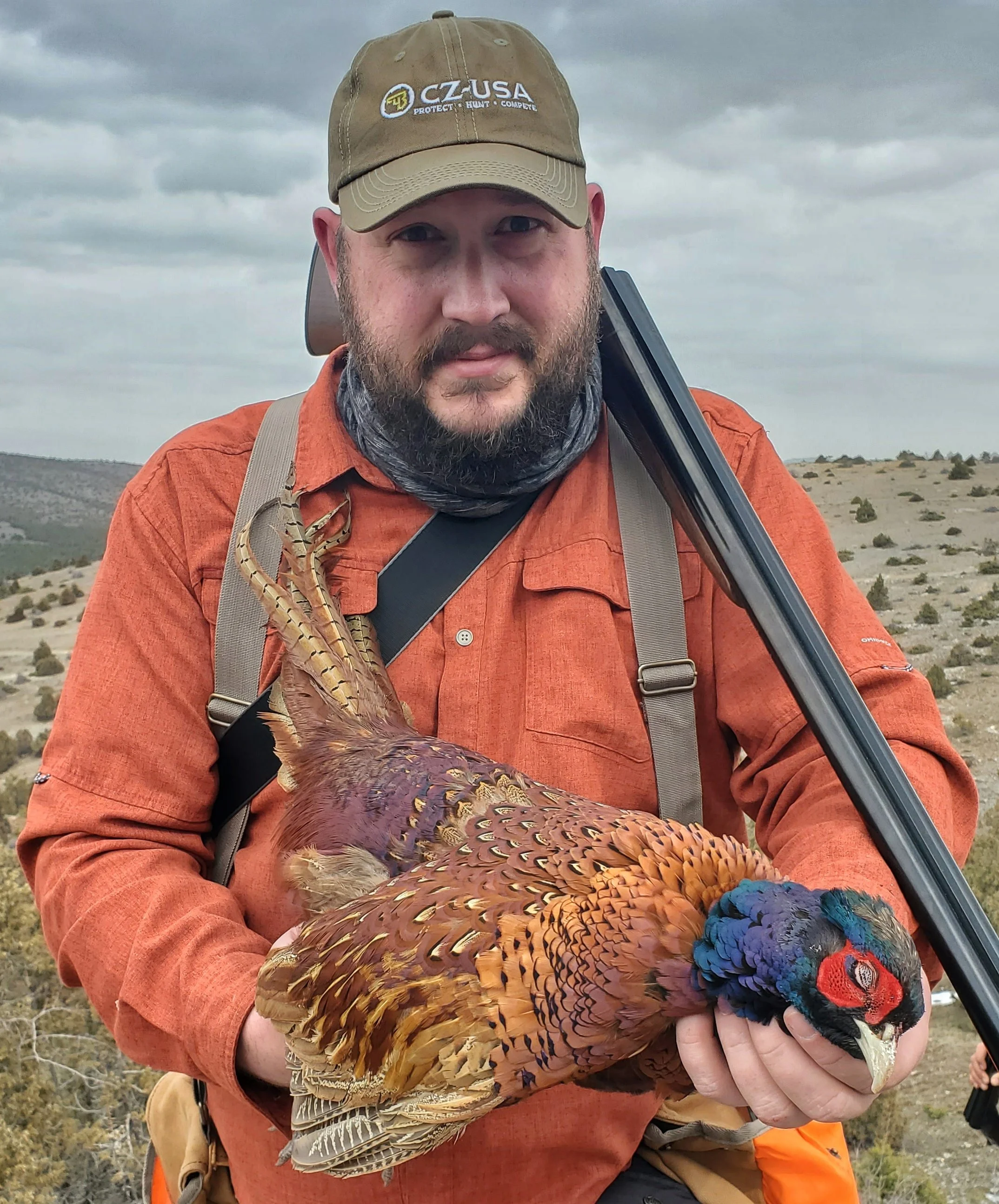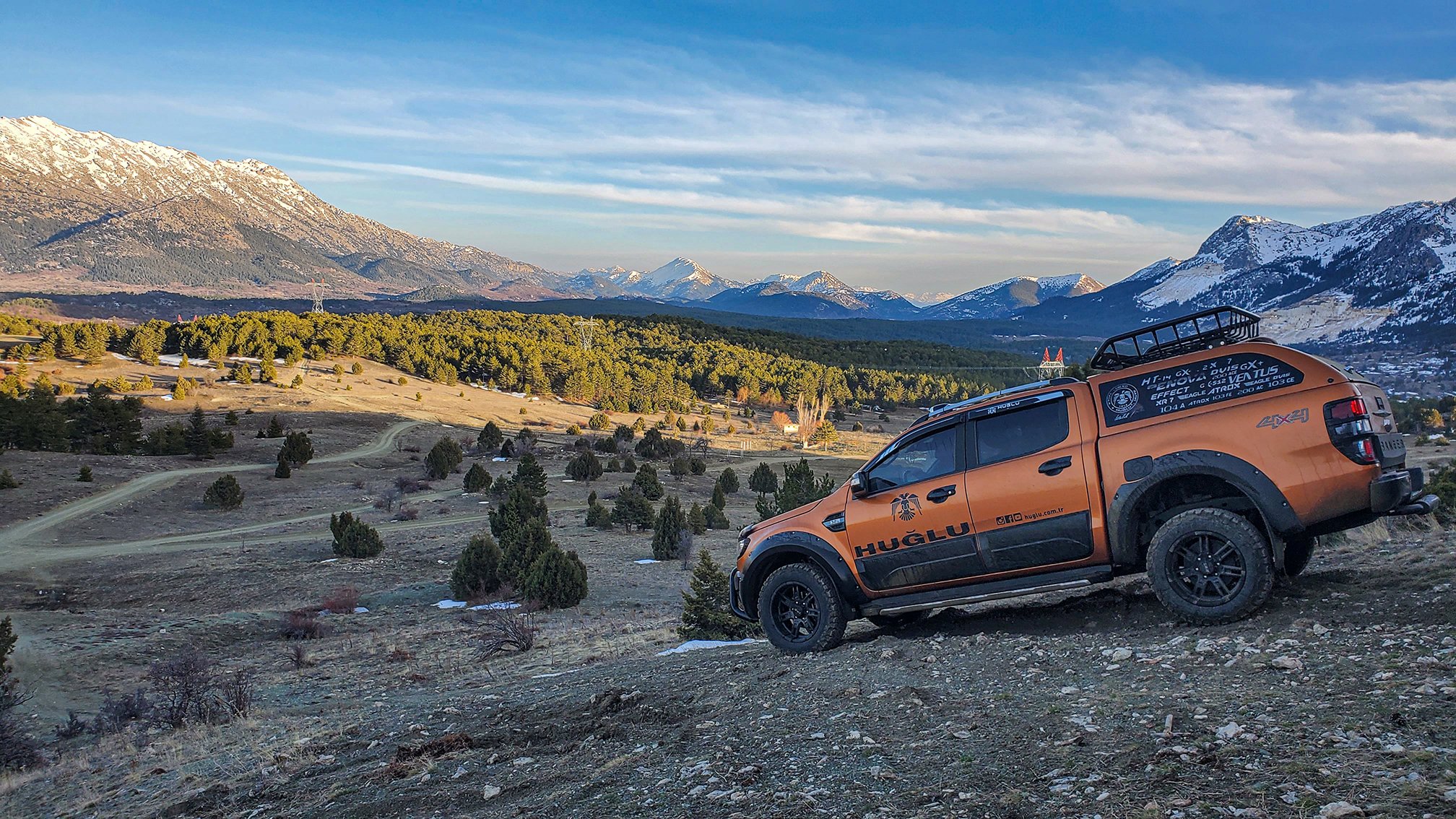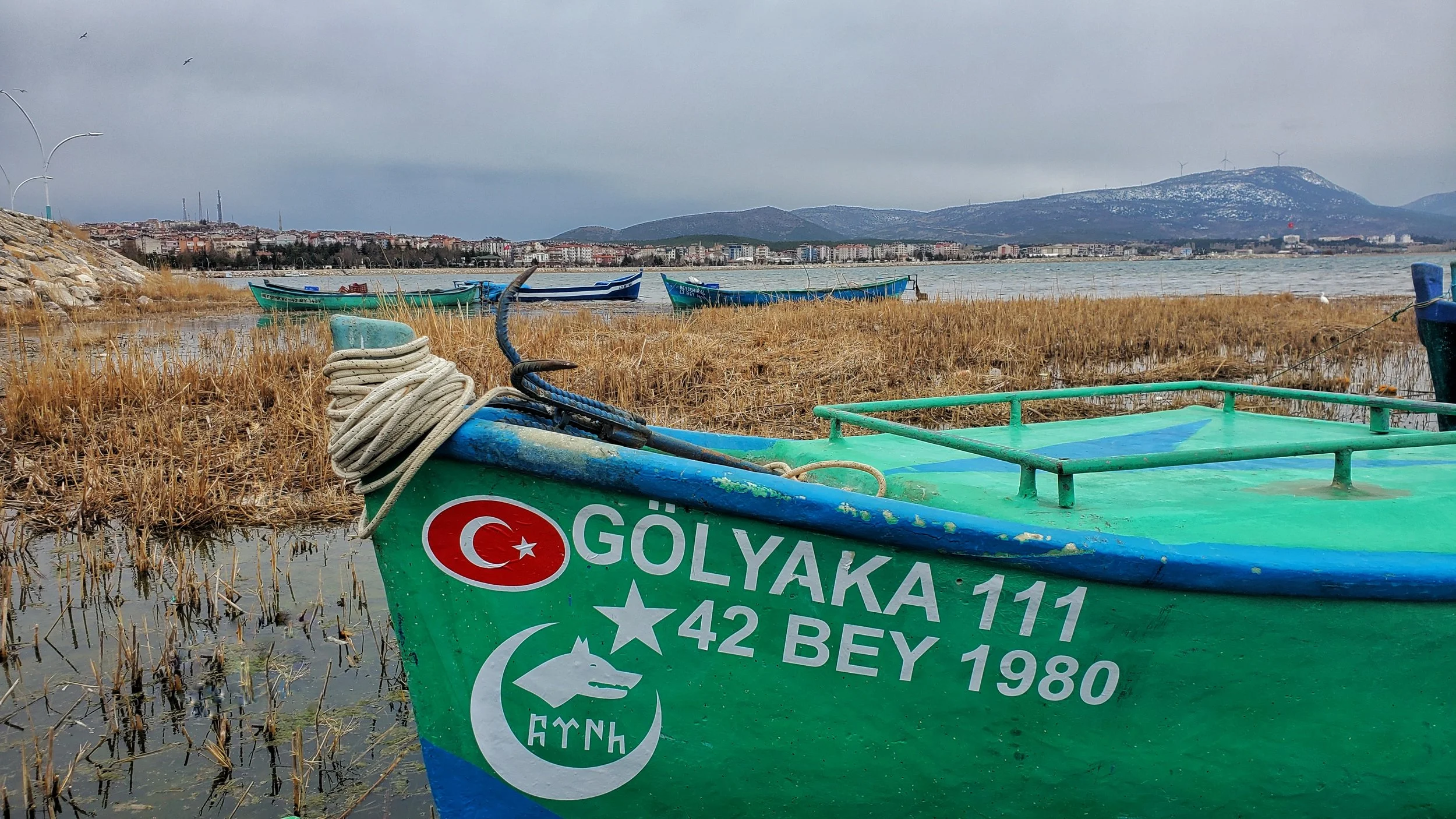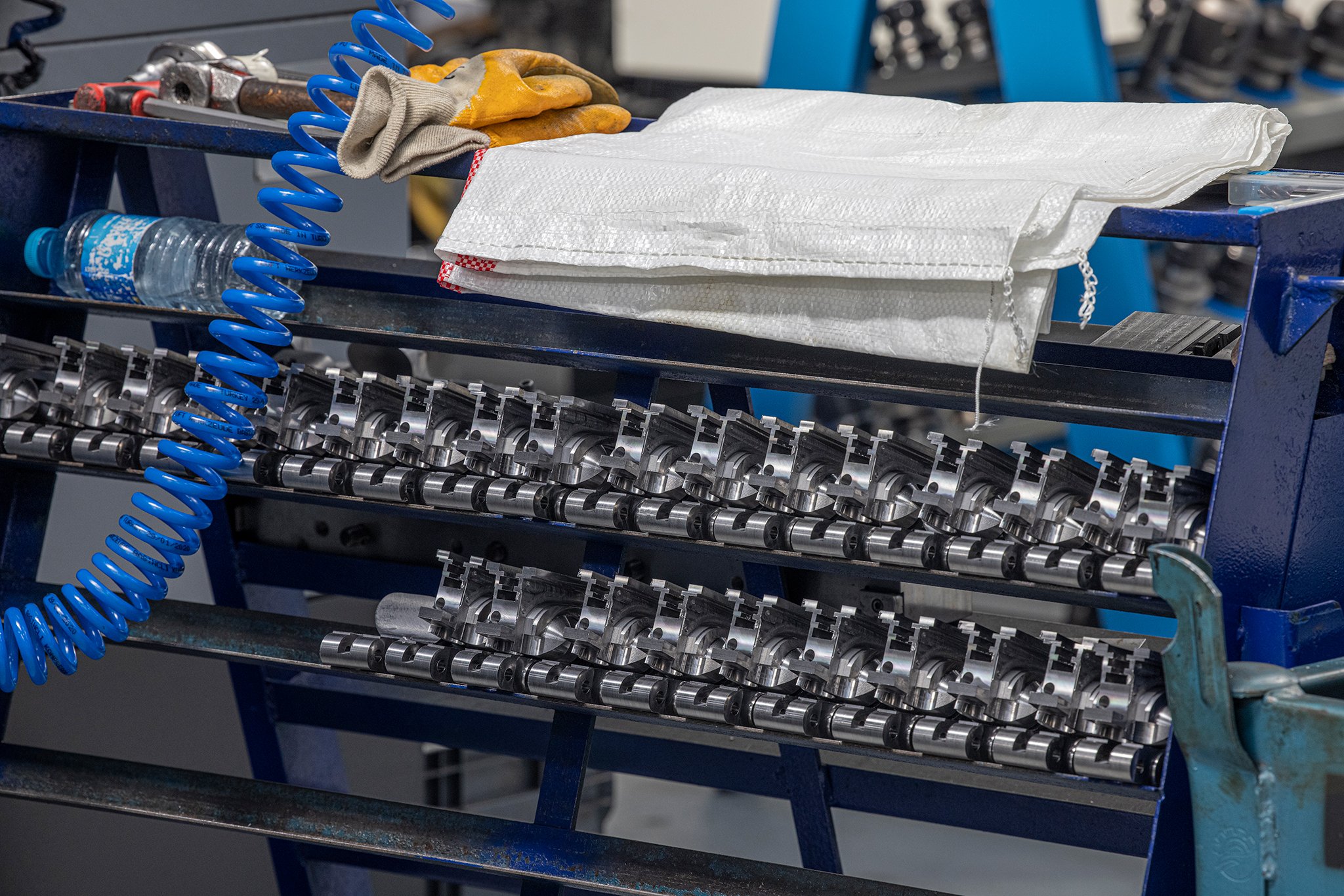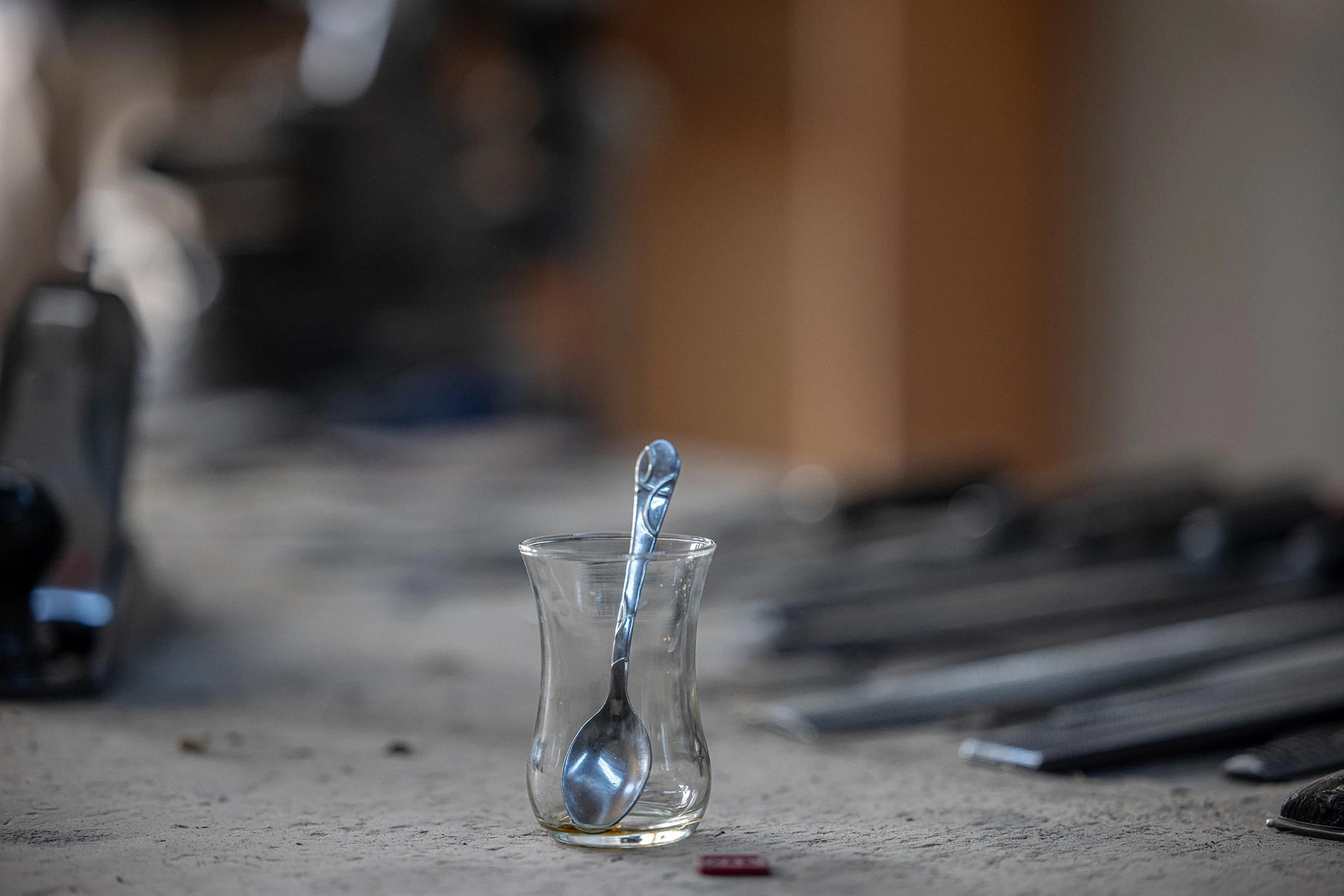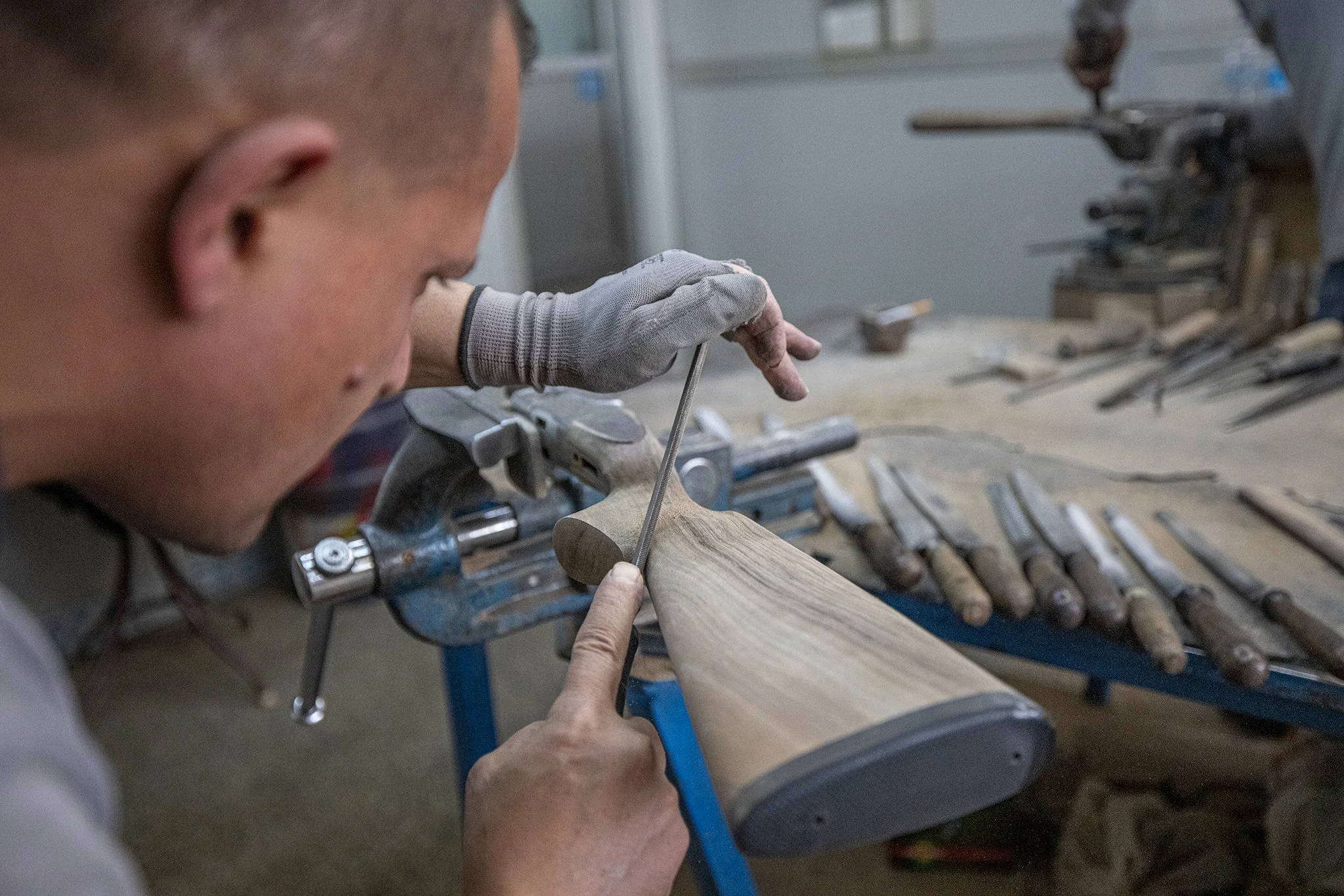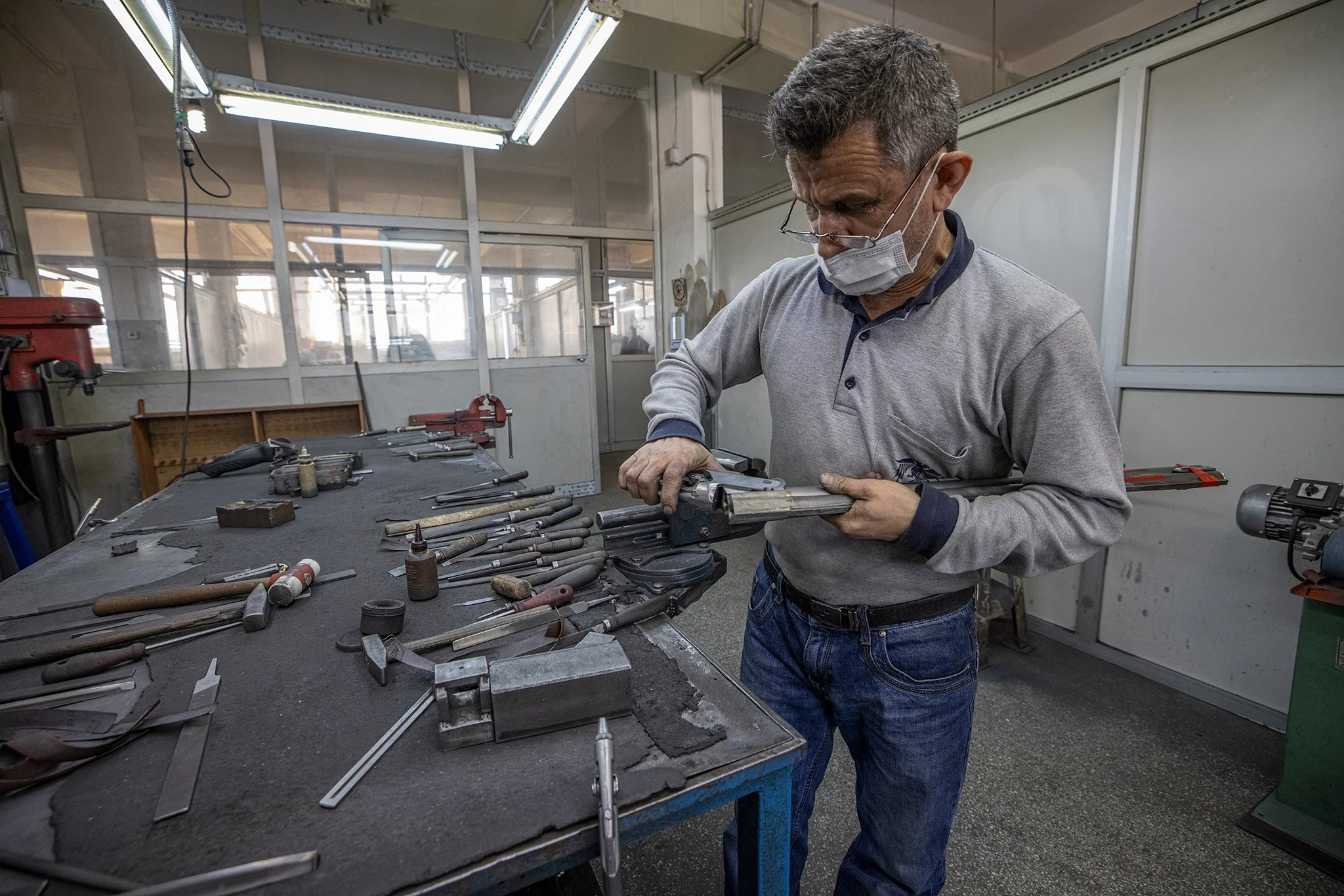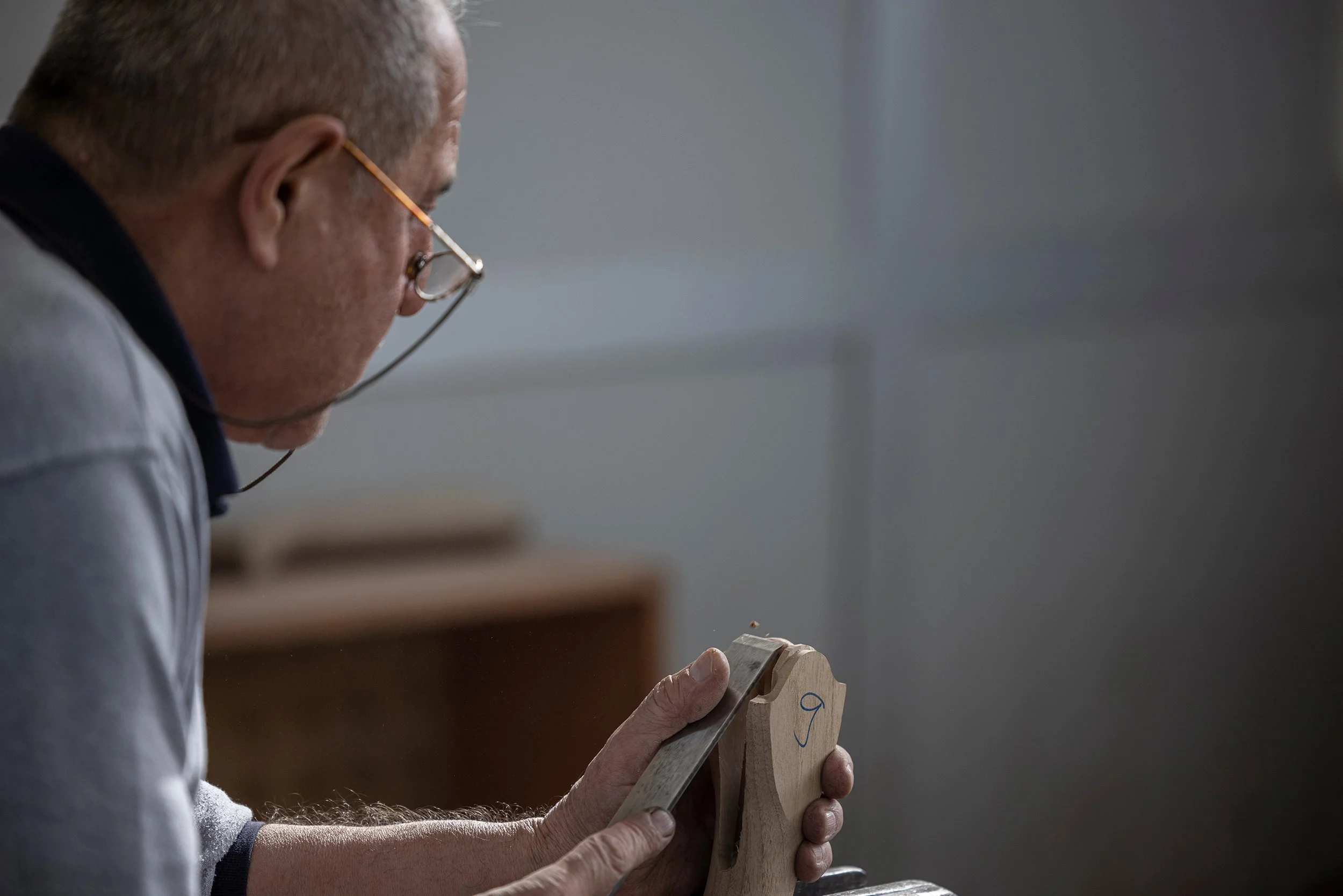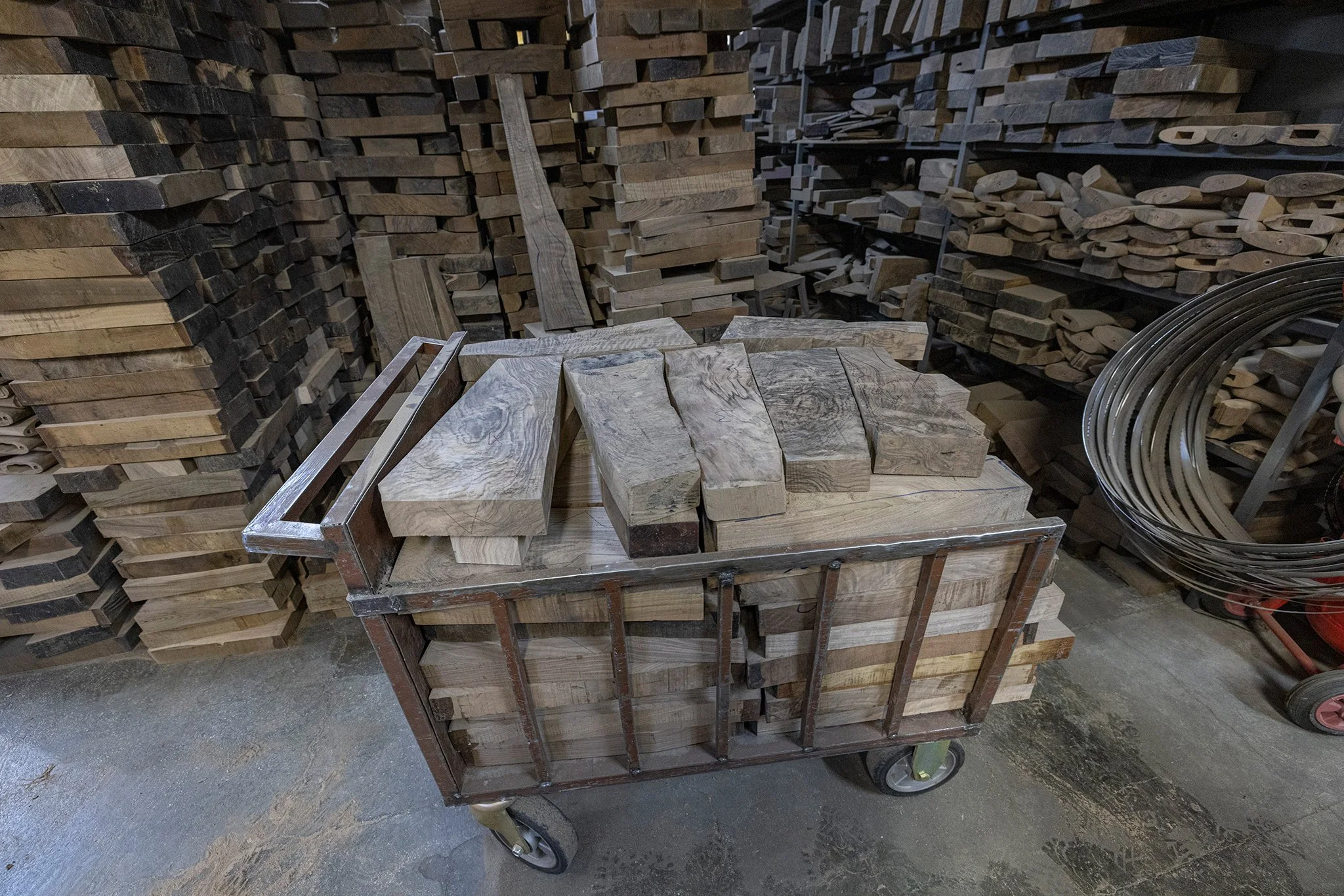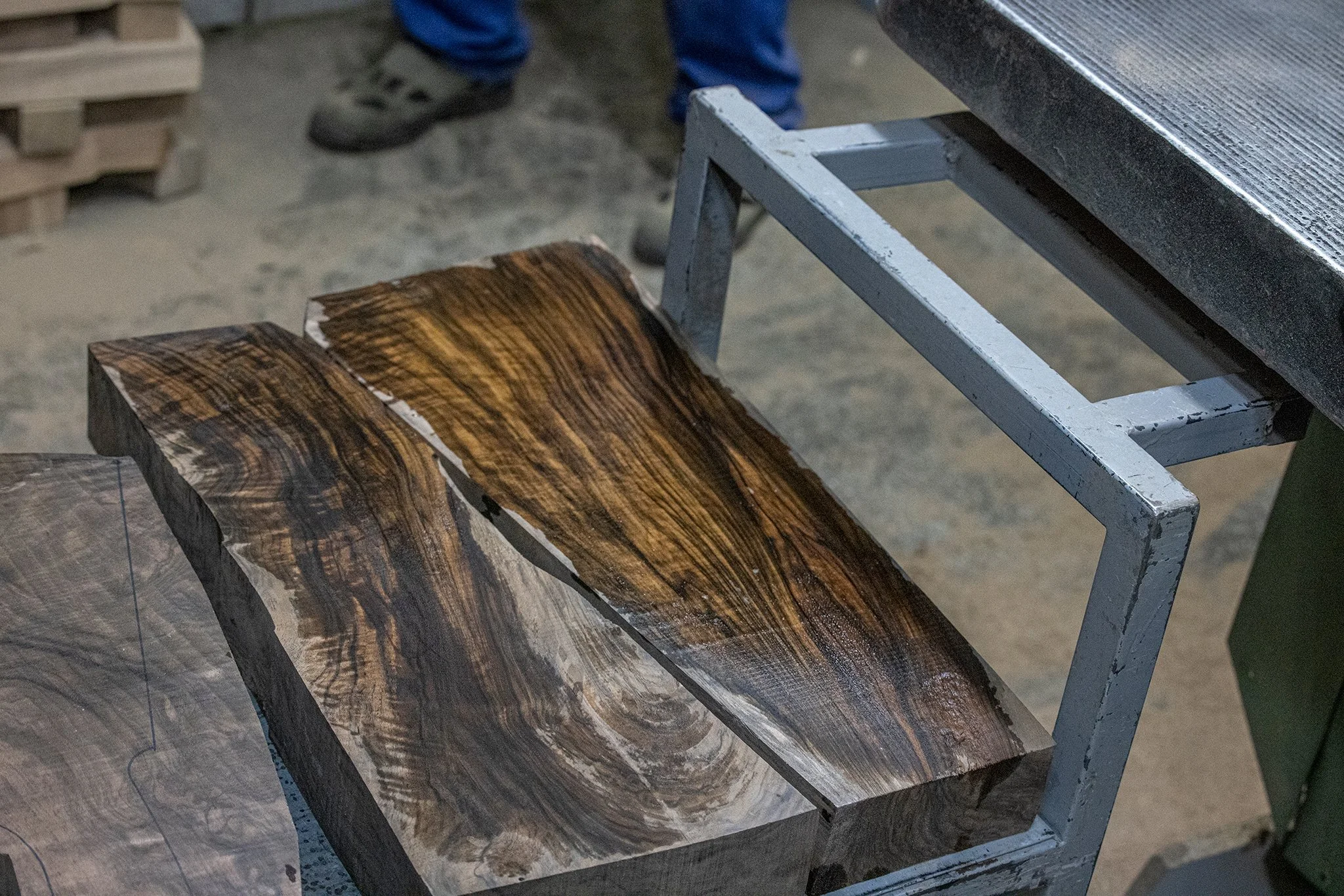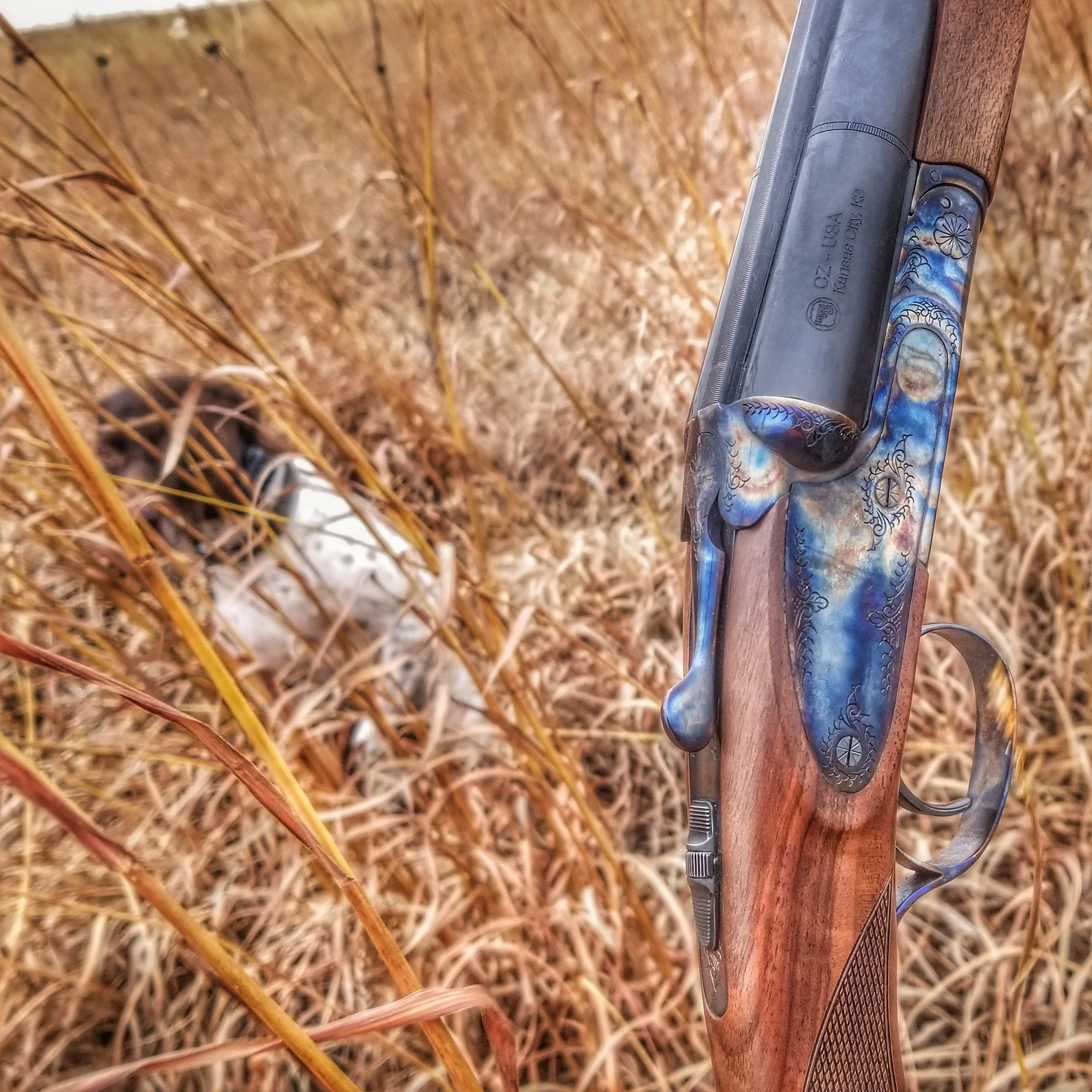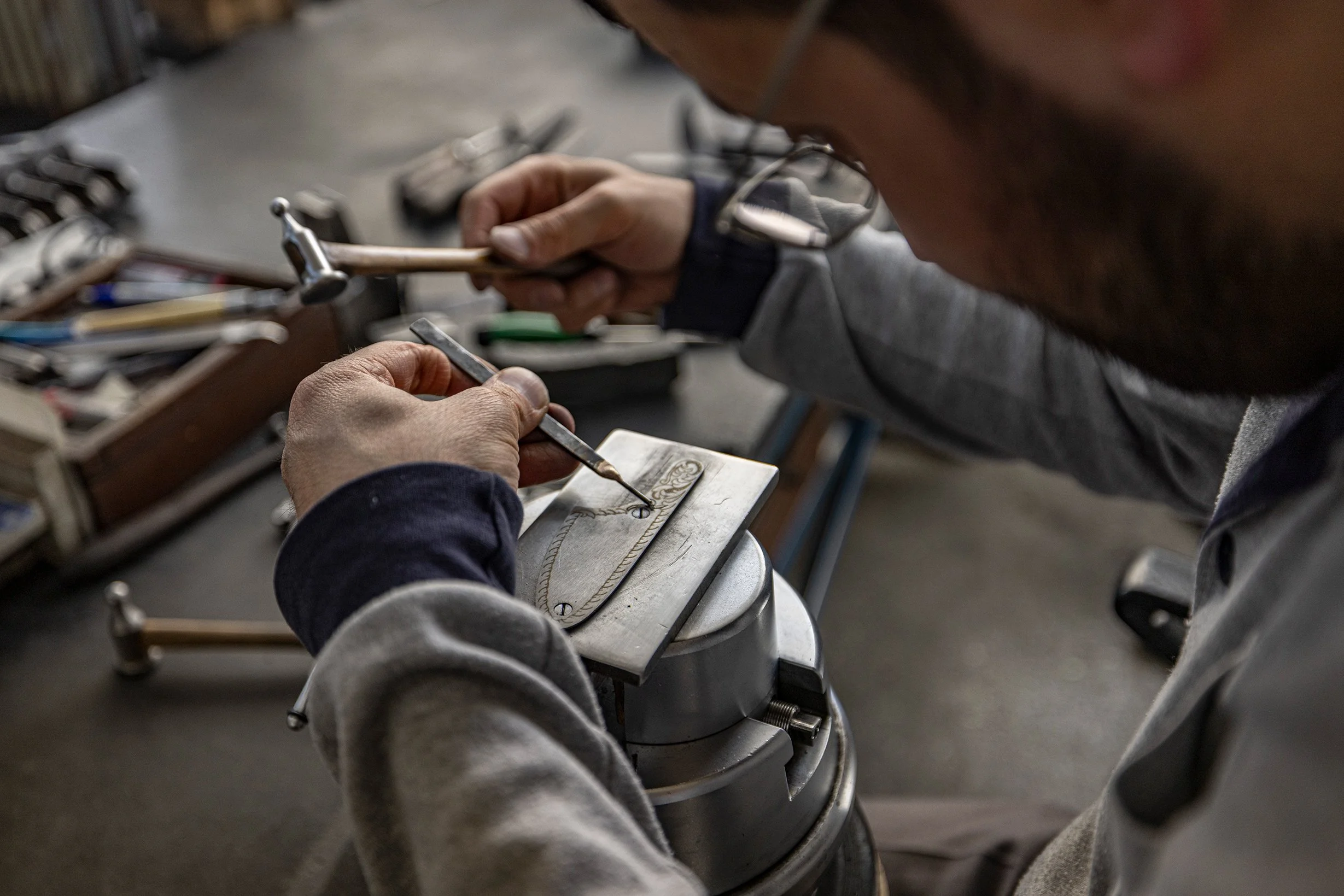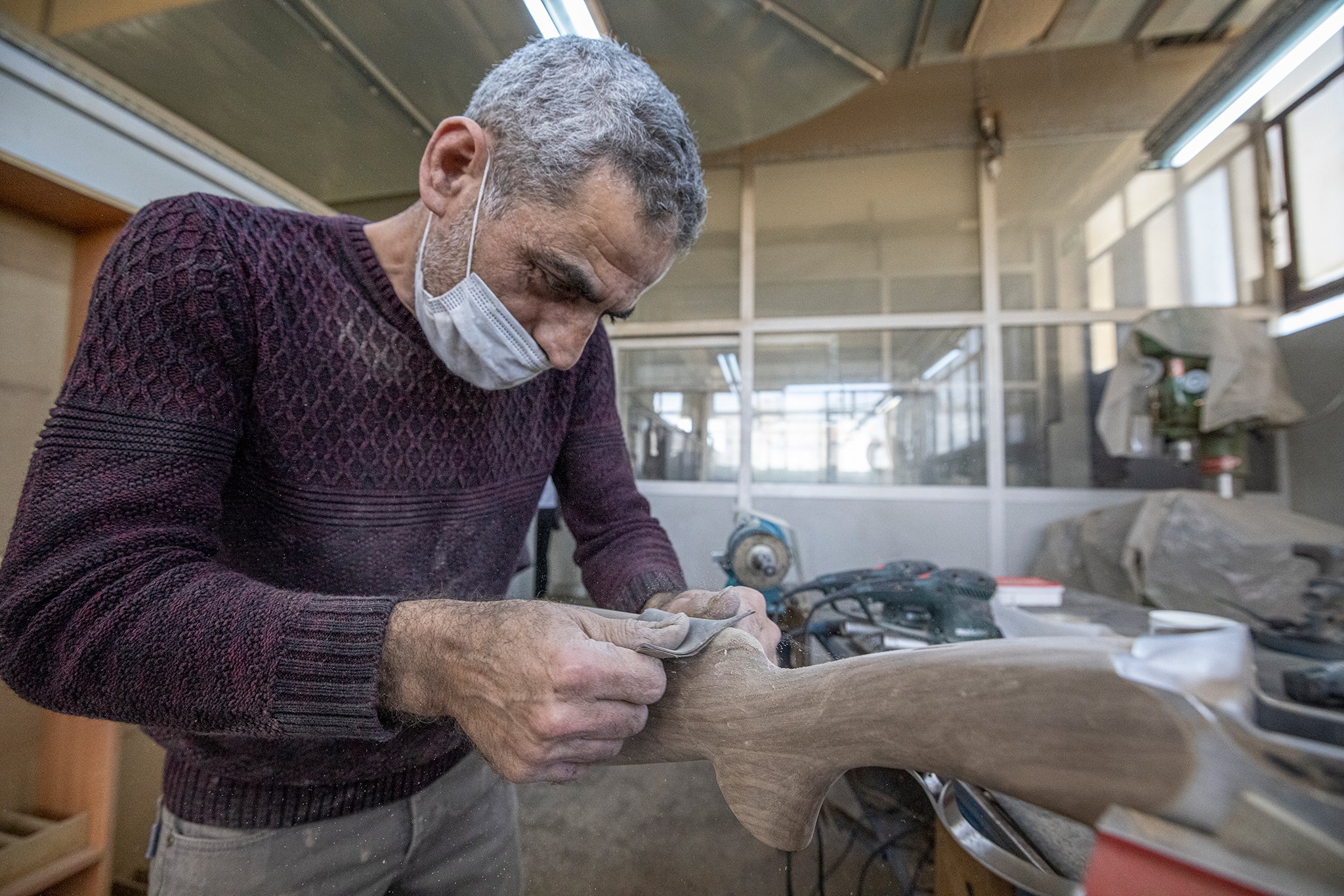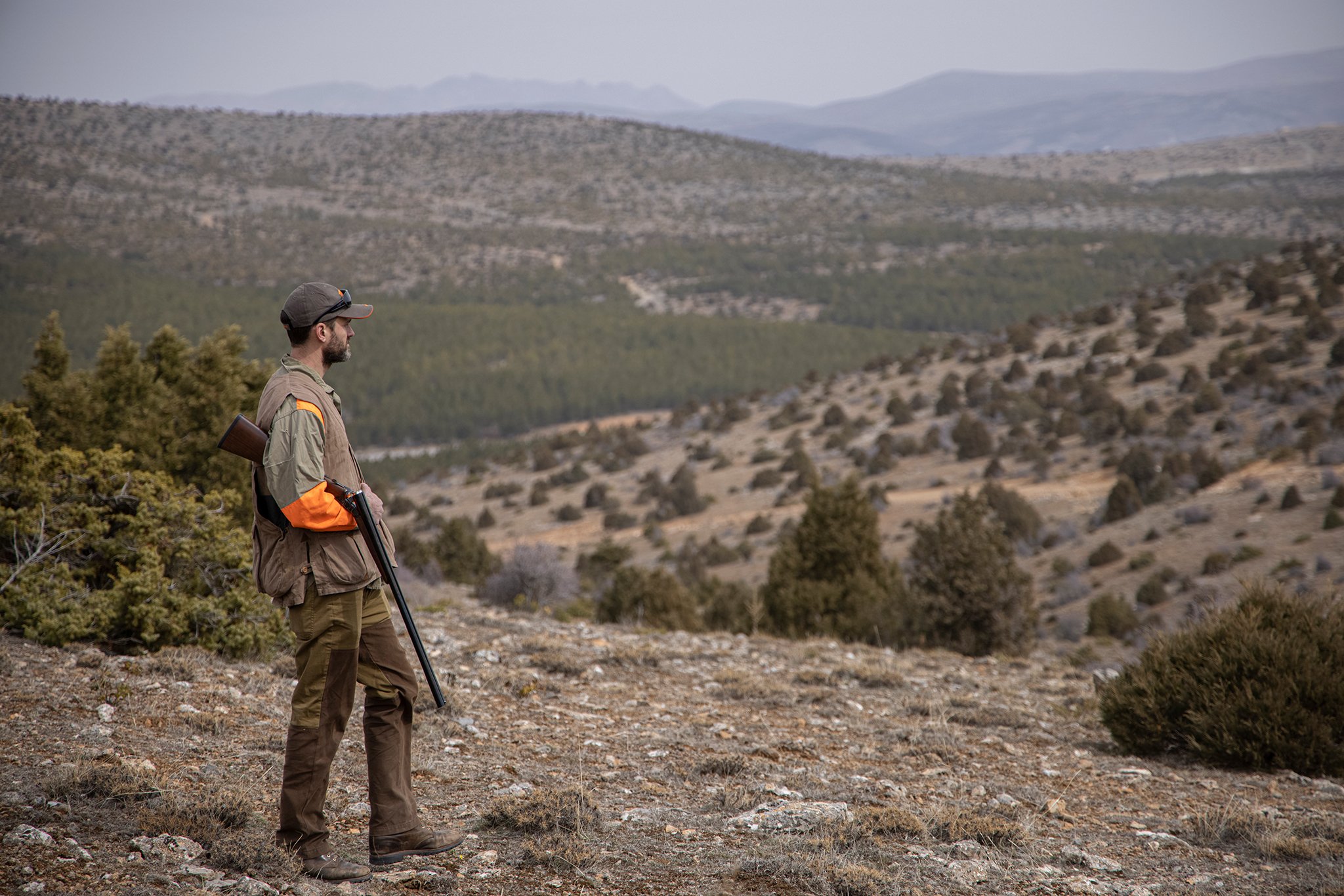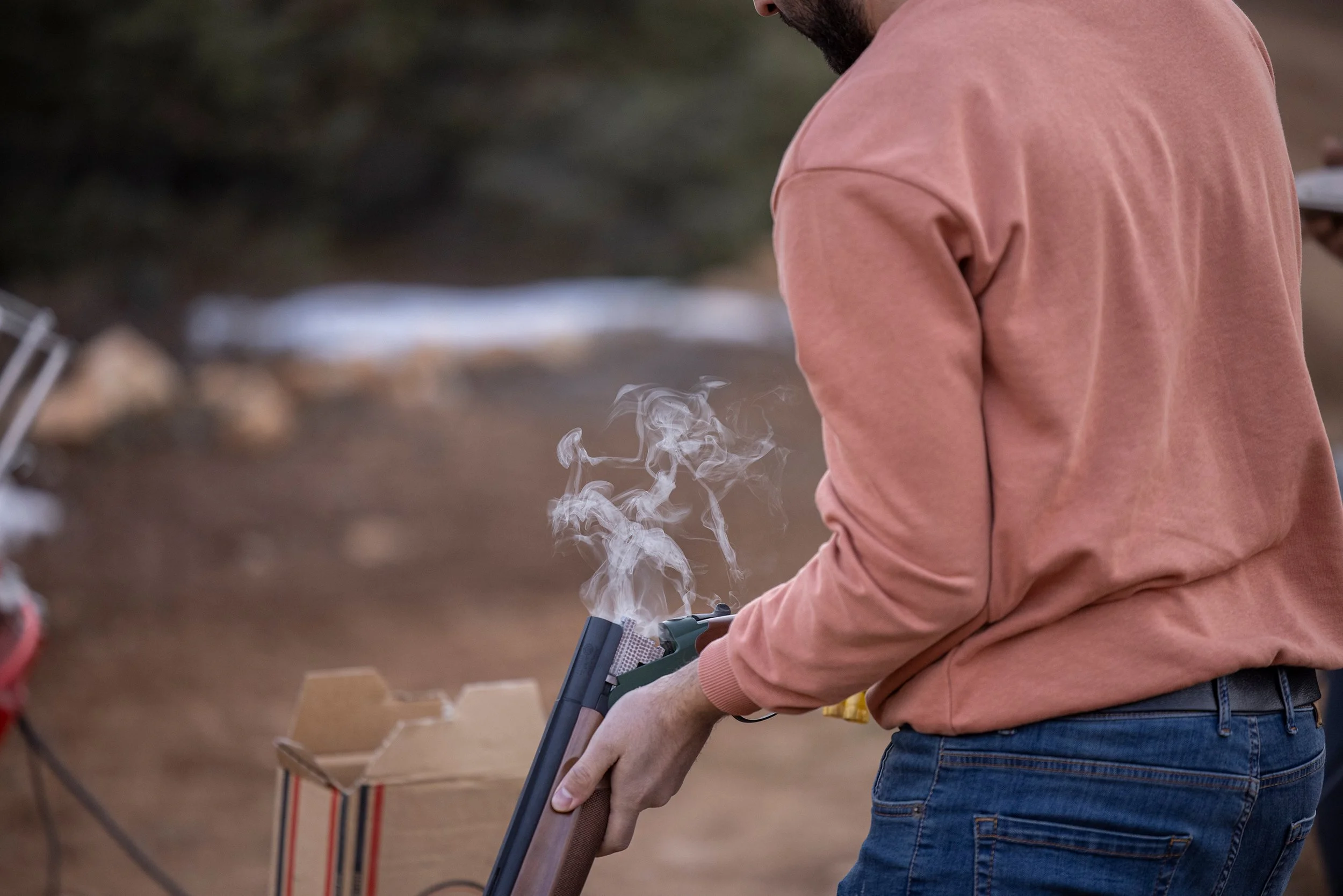Finding Delight in Turkish Shotguns
Originally published in ClayShooting USA, Jan/Feb 2023
My fingertips did a dance on the side-by-side’s splinter forend, subconsciously shying from the barrels’ searing heat as I waited for a target in the Anatolian sun. A morning of hunting chukar and pheasant had pleasantly morphed into an afternoon of tea and clayshooting, passing time as our birds cooked confit in a buried dutch oven of sorts.
Buried over coals and cooked packed in lamb fat, the best bits of our birds was likely what was left at the bottom of the pot…
Targets that had started out fairly simple became increasingly interesting as the mid-day wind picked up, whipping through the cedar trees and making incomers dance at distance while crossers built a blistering speed.
At first we shot sparingly, not wanting to hog the shells and targets our hosts had so graciously provided. But with the wind came challenge and contest, and I could tell Joel was beginning to really enjoy himself about the time we ran out of shells.
We’d come to this remote, mountainous part of Turkey to see the inner workings of CZ-USA’s primary shotgun partner, Huğlu – fully Huğlu Av Tüfekleri Kooperatifi. Perched on a mountainside at the outskirts of a town bearing the same name, firearms manufacturing runs in the blood of this small community and they’ve been plying their collective trade for over a century.
Here in the states, import of Huğlu shotguns has long been exclusively held by CZ’s US subsidiary with very few exceptions. A partnership going back 25 years, the breadth of the product line has included everything from waterfowl and upland hunting shotguns to dedicated target guns and spans the gauges from 12 to .410. With an ever-growing following in the clayshooting world, one of the more surprising success stories within the line has been the exterior hammer-fired side-by-sides that found rapid and sustained popularity in cowboy action/SASS competition.
Finalizing the plans for our visit in early 2021, we knew getting there would be half the battle. Not only is the factory tucked into the south of Turkey, but we were in the grips of the global pandemic with all of the difficulties it brought (and seemingly forever imparted) upon travel and commerce. The rigamarole of international travel had become more bureaucratic than ever before – with an underlying sentiment that we should be grateful that those in power allowed us to travel at all.
My partner in crime on this trip was Joel Penkala, former custom shop manager and marketing guru for Griffin & Howe of New Jersey. A purveyor of fine guns the likes of Boss and Purdey, he had plainly expressed his intrigue at the great differences he might find in manufacturing processes.
Jumping through the hoops to fly halfway around the world, we were on approach to Istanbul as the morning sun crested the edge of the earth – the scope of the massive city impossible to take in even from the air. Fifth-largest in the world and forever a hub of culture and trade, it served as our connecting point for a flight to the interior city of Konya – home of the whirling dervishes I’d heard referenced so many times as a child without truly knowing who or what they were. From there we drove south and west across the bottom of the Anatolian Plateau, coming to rest at the edge of Beyşehir Gölü, the largest freshwater lake in Turkey and just a stone’s throw from Huğlu itself.
Tucked into the northern edge of the Taurus Mountains – the same range that gives birth to the Tigris and Euphrates rivers – Huğlu is a quiet but decidedly industrious town. In the wake of the first World War, a returning conscript and son of the city brought back the trade he had acquired while in the service – gunsmithing. Beginning in his home, he taught his craft to those around him and a gunmaking community was quickly born.
First were individual gunmakers, but over time there developed an interconnected web of specialists working in unison, passing work from person to person and from workshop to workshop until firearms were complete. By 1962, the trade had become such a significant part of the local economy that 165 members of the town came together to form a manufacturing cooperative and bring production under one roof. A factory was constructed and though it would be almost ten years before electricity made its way to the mountain hamlet, Huğlu was already well on its way to becoming the manufacturer it is today.
Looking south over a massive valley between mountain ridges, a pair of factory buildings form the perfect dichotomy of old and new within the company’s complex. To the left is a state-of-the-art headquarters and manufacturing facility unveiled in the summer of 2020, while to the right is a more demure workshop that beats and vibrates as the heart and soul of the operation.
The new factory’s bustling sea of CNC mills, lathes and EDMs create a constant flow of raw metal parts, while on the other end of the property, many thousand blanks of Turkish walnut are kiln dried and stacked, waiting to be turned, inletted, filed and sanded into their final shape. Everything feeds into the older workshop, bristling with craftsmen. Billet actions, Italian barrel steel and Circassian walnut all come together in their skilled hands, fueled by a regular resupply of chai.
This hot black tea lubricates the wheels of the factory – and seemingly the country itself. On the hour a gentleman makes his rounds through the many rooms of the warehouse-sized workshop, delivering piping-hot refreshment to ensure everyone stays caffeinated as they shape metal and sand wood, solder barrels and engrave actions.
Stepping into this bustling cathedral of gunmaking, morning light streamed in through massive banks of windows and illuminated a slight haze of sawdust in the air. From room to room we went, witnessing each step of the process.
Roughly-shaped stocks were deftly mated to the metalwork that would forever ride within them, then metal and wood alike met with craftsman after craftsman as they were refined down to their finished form.
“These guys are skilled – I’m a bit surprised, actually,” Joel remarked. “You can tell each one of them has been doing this for years. Well, decades really.”
We stood in awe, watching a gentleman expertly tune a barrel set to be on face with its action, touching his file to five different planes and taking the perfect amount from each until the action closed with the metallic ring of a one-to-one fit.
“I didn’t expect this, that’s for sure. I think they have more in common with the high end manufacturers than I thought – they just do it at a much greater speed.”
What may be surprising to some, this hand-fitment of metal and wood wasn’t just on the custom-grade shotguns – it was being performed on everything across the board. From the entry-level CZ Bobwhite side-by-side to one-off custom target guns, they all pass through the hands of these same craftsmen.
“To be perfectly honest, I think if you flew a couple of these guys over to London and put them in the same room with a Best gunmaker, they might not be able to talk to each other but they definitely speak the same language.”
Popping out a side door, our factory host Abdussamed led us to the wood side of the complex, where trucks were unloading a fresh shipment of walnut stock blanks just in from suppliers in the north and east of the country.
“Wood has been difficult this year. Our buyers report the price of walnut has gone up 30% in the last few months,” Abdussamed remarked. If he only knew what was coming, with fuel prices and the price of wood in general to continue climbing to previously unheard of levels.
Putting his back into opening the sliding side door of an unassuming building, we were greeted by row upon row of rich walnut blanks from field grade to exhibition level, skillfully layered in massive Jenga-like stacks to allow airflow as the dried and stabilized wood waited to be shaped. Behind was a crypt-like kiln, ready and waiting to process this most recent shipment.
Going from stack to stack, Joel picked up a slab of wood with just a hint of fiddleback – barely visible in the rough surface of the walnut. Stepping over to the beam of light coming in the side door, he started to rotate it in the sun when a worker produced a bottle of water and gave it a spritz of moisture – making the grain and figure absolutely come to life.
The gentleman said something to Abdussamed and our fixer/liaison Murat, who relayed the message, “This would be Grade 2.5 wood, so what CZ would have fit to shotguns with ‘upgraded’ wood like the Supreme Field or Project Upland guns.”
“It looks good as a blank, I can’t imagine how good it’d look once it’s shaped and finished.”
Murat nodded, “That’s the beauty of wood – you never really know until it’s shaped.
“These stacks here are all field grade for standard shotguns, but it’s surprising how many times a lower grade blank hides great looking wood inside,” he said, pointing to the bulk of walnut on one end of the room.
And don’t I know it. A few years earlier I had picked through a handful of shotguns before buying my personal go-to field gun, a CZ Sharp-Tail 20 gauge side-by-side. With strikingly dark mineral streaking and a bit of fiddleback to boot, it is a gorgeous gun. An absolute workhorse, it’s been my shotgun of choice ever since, racking up more than a dozen upland species as I criss-crossed the US chasing birds wherever the opportunity presented.
Stepping back into the workshop, we made our way upstairs to a corner room with some of the best views in the building – though no one there so much as paused to take them in. Heads down and focused, a mix of men from their 30s to their 60s worked with hammer and fine chisel to engrave actions, sideplates and forearm metal.
Destined for CZ over/under and side-by-side shotguns from entry level up, some may be surprised to find that even the light scrolls and filigree of shotguns like the Drake and Bobwhite are all done by hand.
Joel stood in contemplation, “I can’t help but notice that each person is using a different technique, some moving their body around a fixed workpiece, others with a fixture that rotates. Do they get to choose that?”
“Absolutely. Each person is comfortable with a certain style, so they do what is best for them,” Abdussamed confirmed.
Watching whisps of steel curling from the tips of their gravers, I couldn’t help but think that this might be the most satisfying part of the process we had seen so far. In another life I could see myself perfectly happy putting in earbuds and losing myself in the process of engraving – especially with such a stunning setting of mountain vistas and an addictive and ever-flowing supply of hot tea.
The day had been an incredible one, bordering on sensory overload. As my head hit the pillow, I couldn’t help but think how little I had known about how much work had gone into the creation of my favorite shotgun. The number of hands it went through before completion was staggering, from the turning of the barrels to fitment of the ribs and the application of the color case finish – it was surprising to say the least.
Waking early and joining our hosts at a local hunting club, we piled into a yurt for a full Turkish breakfast of the kind we’d become very used to. Piping hot suçuk and eggs was the centerpiece (spicy and distinctively red, suçuk is a beef sausage integral to the regional cuisine), complemented by sesame rolls, olives, cold meats and assorted cheeses. Perfectly sated, we headed into the foothills to enjoy a morning chasing birds before finding ourselves back at the yurt, running our hosts dry on both shells and clays.
One of many lavish Turkish breakfasts had on the trip.
Hefting his 12 gauge Bobwhite, Joel contemplated, “It’s definitely not my Fox, but after seeing all this I’m still impressed. I didn’t really have clear expectations for how the factory worked going into the trip, but after seeing how the sausage is made I’m not coming away with any real reservations.”
I chuckled, knowing that meant a great deal more than it might let on, given the level of shotgun he typically dealt with.
The sound of a four-wheeler approaching grabbed his attention and his eyes tracked over my shoulder, a broad smile breaking across his face. Turning, I couldn’t help but grin myself at the sight of an overly-laden Honda laboring towards us, precariously stacked sky-high with clays and shells.
“It looks like we have more work to do,” Joel beamed.

